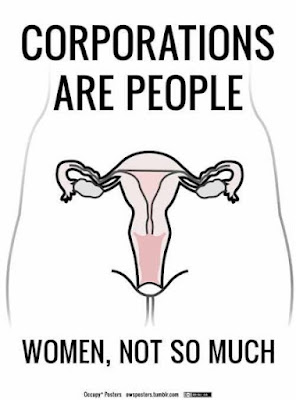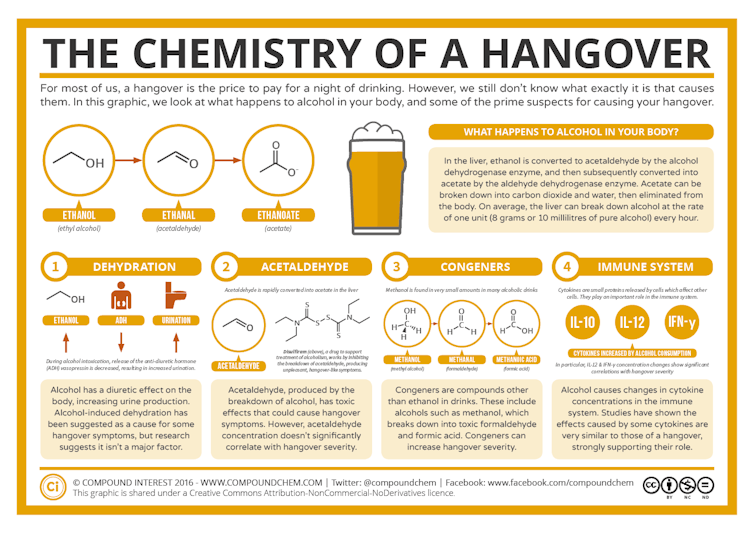SPACE/COSMOS
HEY KIDZ
The Conversation
December 17, 2024

International Space Station (Shutterstock)
Curious Kids is a series for children of all ages. If you have a question you’d like an expert to answer, send it to CuriousKidsUS@theconversation.com.
How is the International Space Station able to orbit without burning up? – Mateo, age 8, New York, New York
Flying through Earth’s orbit are thousands of satellites and two operational space stations, including the International Space Station, which weighs as much as 77 elephants. The International Space Station, or ISS, hosts scientists and researchers from around the world as they contribute to discoveries in medicine, microbiology, Earth and space science, and more.
One of my first jobs in aerospace engineering was working on the ISS, and the ISS remains one of my favorite aerospace systems. I now work at Georgia Tech, where I teach aerospace engineering.
The ISS travels very quickly around the Earth at 5 miles per second (8 kilometers per second), which means it could fly from Atlanta to London in 14 minutes. But at the same time, small chunks of rock called meteoroids shoot through space and burn up when they hit Earth’s atmosphere. How is it that some objects – such as the International Space Station – orbit the Earth unscathed, while others, such as asteroids, burn up?
The ISS moves quickly while it orbits the Earth.
Why do meteoroids burn up in the atmosphere?
Meteoroids are small chunks of rock and metal that orbit the Sun. These space rocks can travel between 7 and 25 miles per second (12 to 40 km per second). That’s fast enough to cross the entire United States in about 5 minutes.
Sometimes, the orbit of a meteoroid overlaps with Earth, and the meteoroid enters Earth’s atmosphere – where it burns up and disintegrates.
Even though you can’t see them, the atmosphere is full of a combination of particles, primarily nitrogen and oxygen, which make up the air you breathe. The farther you are from the surface of the Earth, the lower the density of particles in the atmosphere.
The atmosphere has several layers. When something from space enters the Earth’s atmosphere, it must pass through each of these layers before it reaches the ground.
Meteoroids burn up in a part of Earth’s atmosphere called the mesosphere, which is 30 to 50 miles (48 to 80 kilometers) above the ground. Even though the air is thin up there, meteoroids still bump into air particles as they fly through.
When meteoroids zoom through the atmosphere at these very high speeds, they are destroyed by a process that causes them to heat up and break apart. The meteoroid pushes the air particles together, kind of like how a bulldozer pushes dirt. This process creates a lot of pressure and heat. The air particles hit the meteoroid at hypersonic speeds – much faster than the speed of sound – causing atoms to break away and form cracks in the meteroid.
The high pressure and hot air get into the cracks, making the meteoroid break apart and burn up as it falls through the sky. This process is called meteoroid ablation and is what you are actually seeing when you witness a “shooting star.”

The ISS orbits in the thermosphere, about 200 miles (322 km) from Earth. NOAA, CC BY-ND
So why doesn’t this happen to the International Space Station?
The ISS does not fly in the mesosphere. Instead, the ISS flies in a higher and much less dense layer of the atmosphere called the thermosphere, which extends from 50 miles (80 km) to 440 miles (708 km) above Earth.
The Kármán line, which is considered the boundary of space, is in the thermosphere, 62 miles (100 kilometers) above the surface of the Earth. The space station flies even higher, at about 250 miles (402 km) above the surface.
The thermosphere has too few particles to transmit heat. At the height of the space station, the atmosphere is so thin that to collect enough particles to equal the mass of just one apple, you would need a box the size of Lake Superior!
As a result, the ISS doesn’t experience the same kind of interactions with atmospheric particles, nor the high pressure and heat that meteoroids traveling closer to Earth do, so it doesn’t burn up.
A high-flying research hub
Although the ISS doesn’t burn up, it does experience large temperature swings. As it orbits Earth, it is alternately exposed to direct sunlight and darkness. Temperatures can reach 250 degrees Fahrenheit (121 degrees Celsius) when it’s exposed to the Sun, and then they can drop to as low as -250 degrees F (-156 degrees Celsius) when it’s in the dark – a swing of 500 degrees F (277 degrees C) as it moves through orbit.
The engineers who designed the station carefully selected materials that can handle these temperature swings. The inside of the space station is kept at comfortable temperatures for the astronauts, the same way people on Earth heat and cool our homes to stay comfortable indoors.
Research on the ISS has led to advancements such as improved water filtration technologies, a better understanding of Earth’s water and energy cycles, techniques to grow food in space, insights into black holes, a better understanding of how the human body changes during long-duration space travel, and new studies on a variety of diseases and treatments.
NASA plans to keep the ISS active until 2030, when all of the astronauts will return to Earth and the ISS will be deorbited, or brought down from orbit by a specially designed spacecraft.
As it comes down through Earth’s atmosphere in the deorbiting process, it will enter the mesosphere, where many parts of it will heat up and disintegrate.
Some spacecraft, such as the crew capsules that bring astronauts to and from the ISS, can survive reentry into the atmosphere using their heat shield. That’s a special layer made up of materials that are able to withstand very high temperatures. The ISS wasn’t designed for that, so it doesn’t have a heat shield.
If you’d like to see the space station as it passes over your area, you can check out NASA’s website to find out when it might be visible near you.
Hello, curious kids! Do you have a question you’d like an expert to answer? Ask an adult to send your question to CuriousKidsUS@theconversation.com. Please tell us your name, age and the city where you live.
And since curiosity has no age limit – adults, let us know what you’re wondering, too. We won’t be able to answer every question, but we will do our best.

Kelly Griendling, Lecturer of Aerospace Engineering, Georgia Institute of Technology
This article is republished from The Conversation under a Creative Commons license. Read the original article.
Boldly brewing where noone has brewed before: Japanese sake to be made in space
Asahi Shuzo Co., renowned for its premium Dassai sake, has unveiled a pioneering plan to brew rice wine on the International Space Station (ISS) in 2025, marking the first step in its audacious vision of brewing on the moon. The Iwakuni-based sake producer, in collaboration with Mitsubishi Heavy Industries Ltd. and the Aichi Center for Industry and Science Technology, will launch rice, koji mold, and yeast to the ISS next year. This marks a groundbreaking experiment in both the world of brewing and space exploration, as reported by The Asahi Shimbun.
The company’s ambition doesn’t stop at the ISS. Asahi Shuzo's ultimate goal is to establish a sake brewery on the moon, using lunar water to create its signature Dassai sake. "Our ultimate goal is to brew Dassai on the moon using water found there," a spokesperson for the company said, underlining the long-term vision of lunar colonisation.
The project will use Japan's Kibo module on the ISS to initiate the fermentation process. Astronauts will mix the ingredients with water, setting the stage for a unique brewing experience in microgravity. The mixture will then undergo automated stirring and alcohol-level monitoring, before being frozen and returned to Earth. This moromi, or unrefined sake, will be used to create a single 100-millilitre bottle of "Dassai MOON–Space Brew."
This limited-edition bottle, which will carry a price tag of JPY100mn (about $653,000), is expected to capture the public’s imagination. All proceeds will go towards supporting domestic space development projects, reinforcing Japan’s commitment to advancing space technology. Asahi Shuzo believes that sake, due to the lighter weight and lower water content of rice compared to grapes, makes a more viable experiment than winemaking in space.
By venturing beyond Earth's atmosphere, Asahi Shuzo aims to explore new frontiers for brewing while also contributing to the development of space-related technologies. The ambitious project signals a bold future where space exploration and traditional craftsmanship converge, bringing sake brewing to the stars and potentially beyond.
The Scottish spaceport stuck in limbo
Steven McKenzie
BBC Scotland Highlands and Islands reporter

A site on A'Mhoine Peninsula was selected for a spaceport
A Highland peatbog was to be home to the UK's first spaceport.
But more than six years after a UK government announcement confirming the plan, rockets launching from Sutherland Spaceport seems unlikely any time soon.
Where is the spaceport site?
It is on A'Mhoine Peninsula, a landscape of moorland, peatbogs, grazing pastures, lochs and hills in north west Sutherland.
The 86-acre (35ha) site is owned by Melness Crofters' Estate.
The estate, which covers a total area of 10,000 acres (4,074 ha), is run by crofters.
Crofting is a system of land tenure and farming unique to Scotland.
The nearest homes from the spaceport's boundary are just over two miles (3km) away.
Tongue, a community of about 500 people, is about four miles (6km) away.

Why Sutherland?
The area has been billed as one of the few places in Europe that is sparsely populated and in the right place for launching small rockets vertically into space.
A north facing coast means rockets avoid flying over populated areas - and ideally placed for launching small satellites into commercially-desirable orbits.
The plan for Sutherland was for 12 launches a year and satellites designed for monitoring climate change.
Public agency Highlands and Islands Enterprise (HIE) has been leading the project.
It previously said the spaceport would bring much-needed highly skilled jobs and investment to the Highlands.
The facility was to be developed as part of a wider network of spaceports.
The billionaire opponents

The Holch Povlsens own land in Sutherland and had concerns about the spaceport's environmental impacts
After Conservative business secretary Greg Clark announced a package of support back in July 2018 at Farnborough International Air Show the project hit a number of milestones in the planning process:Scottish Land Court, which hears disputes in crofting and farming, approved a change use of the land in September 2021
Highland Council granted full planning permission in August 2020
Amended plans were given the go-ahead in October this year
But this journey has been far from smooth.
Some crofters objected because of concerns about the spaceport's impact on the environment, local roads and crofting rights.
Billionaire couple Anders and Anne Holch Povlsen, who own land near the site, also objected because of concerns about its impact on the Caithness and Sutherland Peatlands Special Protection Area.
Their opposition even saw them invest almost £1.5m in a rival project - Shetland's SaxaVord Spaceport.
A project in limbo
The news broke at the start of December.
Orbex, one of the major backers of Sutherland Spaceport, announced construction was paused and it was instead focused on launching its first rockets from SaxaVord.
The rocket manufacturer, which employs 150 people at a factory in Forres in Moray, did not rule out completing the Highland site in the future.
But chief executive Phil Chambers said: "Our primary goal is to support the European space industry by achieving a sustainable series of satellite launches into low Earth orbit.
"This is best achieved by focusing our resources and talents on developing launch vehicles and associated launch services.
"This decision will help us to reach first launch in 2025 and provides SaxaVord with another customer to further strengthen its commercial proposition. It's a win-win for UK and Scottish space."
HIE said the decision was an "unexpected change in direction", but added it was important to stress Orbex was a very significant player and employer in the UK space industry.
Orbex
Sutherland Spaceport costs and investment
£17mExpected cost of the facility
£1.9mHIE grants up to November 2024 given to Orbex for costs associated with developing the site
£2mHIE previously invested. UK Space Agency also gave £2.5m and Nuclear Decommissioning Authority £2.6mSource: HIE
What next?
Melness Crofters' Estate (MCE) wants to work with HIE and Orbex to get the spaceport operational.
A spokesperson told BBC Scotland News: "We were never just doing this for Melness.
"We saw this as planting a seed of something from which other opportunities could grow for the wider community in the north.
"There are very few job opportunities for young people in our area."
They added: "Our payments from the rental of our land have already resulted in MCE investing in several other local projects.
"There are plans for 12 affordable houses in planning at the moment."
HIE said the impact of Orbex decision was unclear.
It added: "We want to send a clear message to local people in north Sutherland that we are deeply disappointed at this turn of events and remain committed to working with them to develop a positive future for Melness and the surrounding area."
Shares in Hungary’s 4iG skyrocket amid speculation over SpaceX collaboration

Shares of 4iG, a leading Hungarian ICT, rallied 9% on December 10 on speculation that the company could work together with Elon Musk's SpaceX.
President-elect Donald Trump hosted Prime Minister Viktor Orban and his Foreign Minister Peter Szijjarto at his Florida estate, Mar-a-Lago, on December 9. It marked the first meeting between the two leaders since the November elections. The talks were attended by Gellert Jaszai, head of Budapest-listed 4iG and incoming National Security Advisor Mike Waltz and and tycoon Elon Musk.
One of the topics discussed was the launch of 4iG’s HUSAT satellite programme, the first of its kind in the CEE region to develop satellite-based telecommunications and Earth observation capabilities, the Hungarian IT group 4iG said in a statement. This could open a whole new chapter in the field of innovation and cooperation between the US and Hungary, it added.
Under the HUSAT initiative, the 4iG Group plans to deploy and operate one geostationary satellite (HUGEO) and an additional eight (6+2) low-Earth orbit satellites (HULEO) by 2032.
The company will manufacture the low Earth orbit satellites in a 4,000 sqm space technology centre, near Budapest, slated to start operating by 2026. 4iG’s space and defence arm, grouping a dozen companies, focuses on space and satellite development, the manufacturing of drones and anti-drone systems, and defence sector digitalisation.
"The friendly discussions marked the beginning of efforts to foster the adoption of advanced technologies and bolster transatlantic economic ties," Jaszai was quoted as saying in the statement.
The meeting signals Hungary's ambition to position itself as a credible player in the global space industry. This move represents a notable shift from initial scepticism toward Hungary’s space ambitions, which even drew criticism from within Orban’s own political circles. Over time, however, increased investment and strategic focus from both the Hungarian government and 4iG have turned these efforts into a serious undertaking, Telex.hu writes.
At a joint press conference with his Georgian counterpart, Szijjarto said Hungarian-American political relations are set to enter a "golden age" with the election of Donald Trump.
University of Texas at San Antonio launches new center to propel space technology
The Center for Space Technology and Operations Research (CSTOR) is poised to leverage UTSA expertise to strengthen national security and Texas leadership in the emerging trillion-dollar cislunar economy.
image:
The Center for Space Technology and Operations Research (CSTOR) is poised to leverage UTSA expertise to strengthen national security and Texas leadership in the emerging trillion-dollar cislunar economy.
view moreCredit: The University of Texas at San Antonio
UTSA’s Office of Research today announced the launch of the Center for Space Technology and Operations Research (CSTOR), a new research center dedicated to advancing engineering, technology and operations that will support space missions between the Earth and the Moon, an area referred to as cislunar space, as well as the lunar surface. The center will address the growing demand for research and workforce development by civil, commercial and national security space agencies and companies. David Silva, UTSA distinguished professor of physics and astronomy, will serve as the center’s inaugural director.
CSTOR will provide enhanced support to the more than 35 UTSA researchers and over 200 students working on space technology related research and career development in areas such as uncrewed spacecraft, lunar habitation, hypersonics and propulsion. It will further augment the university’s effort to attract even more of the nation’s brightest minds in space technology through UTSA's clustered and connected faculty hiring plan, supported by the UT System Board of Regents’ Research Excellence Program.
“UTSA has intentionally expanded its capacity, facilities and expertise in space technology to meet the rapidly growing demand for innovation and enable stronger comprehensive partnerships with key organizations like Southwest Research Institute and Department of Energy National Labs,” said UTSA President Taylor Eighmy. “The launch of this new center positions UTSA as a destination for innovation, knowledge creation and talent development for the space economy.”
Technology and workforce development for the space economy is a growing priority in federal and state policy. In 2022, the White House Office of Science and Technology Policy released a strategy outlining its approach to cislunar space, titled the National Cislunar Science and Technology (S&T) Strategy. The plan affirms the growing role of cislunar space in diplomacy and national security and aims to bolster support for research and development in the field. At the state level, the Texas Space Commission was established in 2024 to sustain and grow Texas’ leadership in space exploration.
“We may not always think about space technology as being integral to national security,” Silva said, “but when you consider the fact that our daily lives rely on satellites for GPS services, telecommunications and weather forecasting, it's clear that cislunar space is a linchpin in our national defense. Our new center is poised to leverage UTSA expertise to strengthen national security and Texas leadership in the emerging trillion-dollar cislunar economy.”
Satellites can also be used in agriculture, logistics and energy to monitor crops, traffic patterns and energy grids. They can optimize supply chains and strengthen maritime security by monitoring ports. They also provide key insight into the environment, for instance by monitoring freshwater availability providing early warnings of natural disasters such as floods and wildfires.
Space infrastructure represents a rapidly growing market in the global economy. A 2022 McKinsey & Company report projects that the industry will grow from $630 billion in 2023 to $1.8 trillion by 2035. This growth will be catalyzed by the rapidly increasing cost-effectiveness of launch, which has been enabled by companies based or operating in Texas such as Blue Origins, Firefly and SpaceX. This expansion will likely spur corresponding growth in the job market, with U.S. aerospace engineering jobs expected to increase by 6% between 2023 and 2033.
CSTOR will support a range of technological space research focus areas in which UTSA excels, including advanced chemical propulsion, fuel for nuclear thermal propulsion (NTP), lunar habitation and surface operations, secure satellite communications and vehicle atmospheric reentry. UTSA is also home to space-related expertise in advanced manufacturing, cybersecurity, energy storage in extreme environments, neuromorphic AI, power systems, robotics, and semiconductor devices for high-power, extreme environment applications.
UTSA’s space technology capabilities are further supported by several research centers and facilities. These include the Hypersonics Lab, the Center for Advanced Measurements in Extreme Environments, the Kleberg Advanced Microscopy Center, the Planetary Material CHaractErization Facility (PMCHEF), the Laser Spectroscopy and Chemical Propulsion Lab, the Wireless Next Generation Systems Laboratory, the Heat and Mass Transfer Experimental Rheology Lab, the Extreme Environments Materials Laboratory, the Laboratory of Turbulence, Sensing, & Intelligence Systems, the Next Generation Networks Laboratory (NGNL) and the Unmanned Systems Lab.
CSTOR will collaborate closely with the National Security Collaboration Center to promote research aimed at advancing and securing these and other critical systems, as well as UTSA’s other existing centers, including the Cybersecurity Manufacturing Innovation Institute, the Center for Infrastructure Assurance and Security, the Institute for Cyber Security, the Cyber Center for Security and Analytics, as well as the NSF CREST Center for Security and Privacy Enhanced Cloud Computing.















